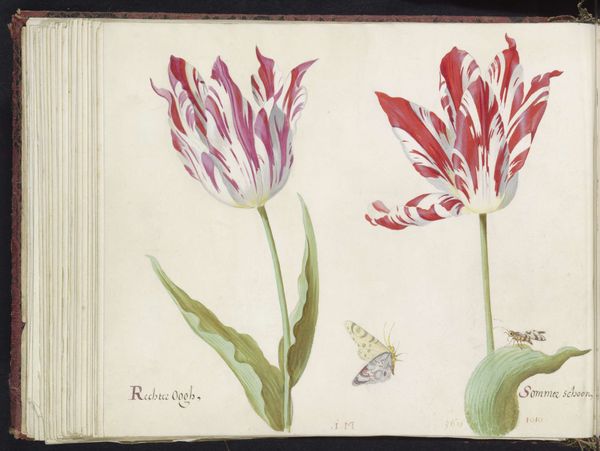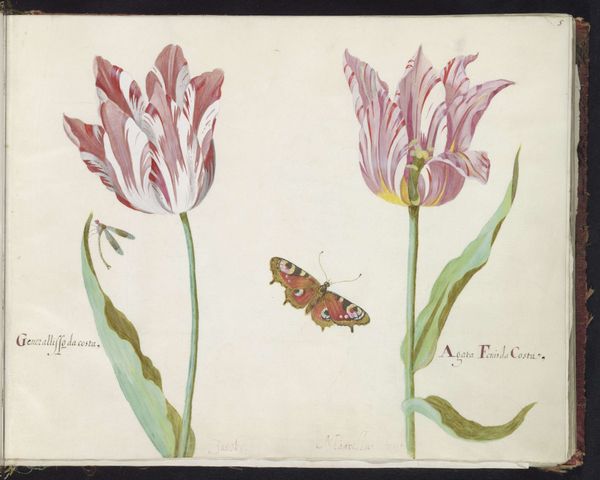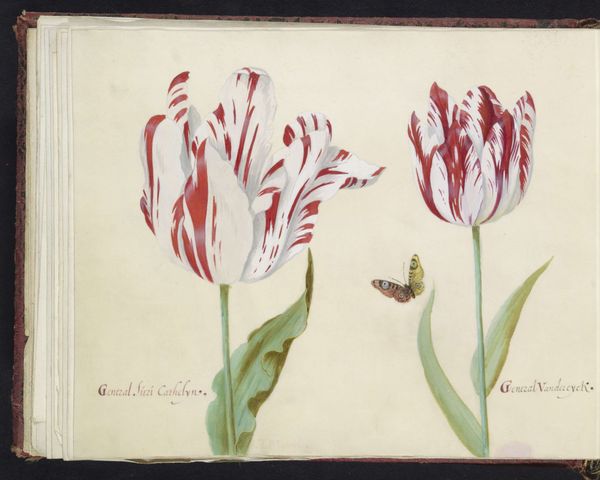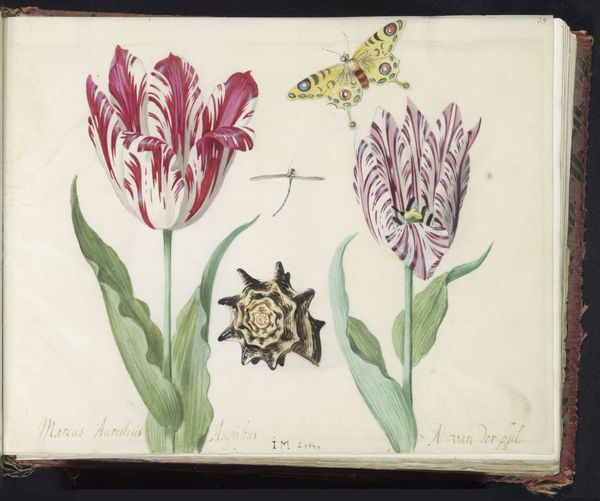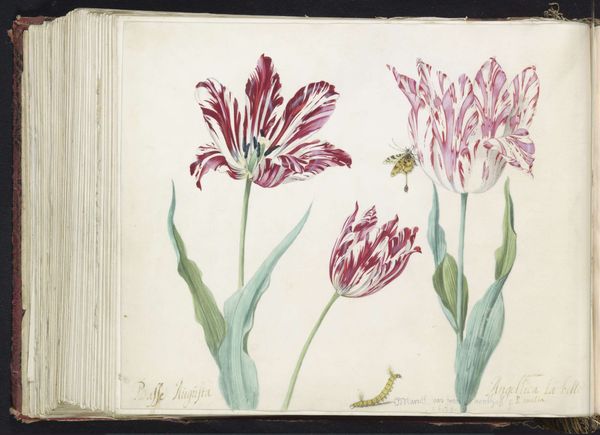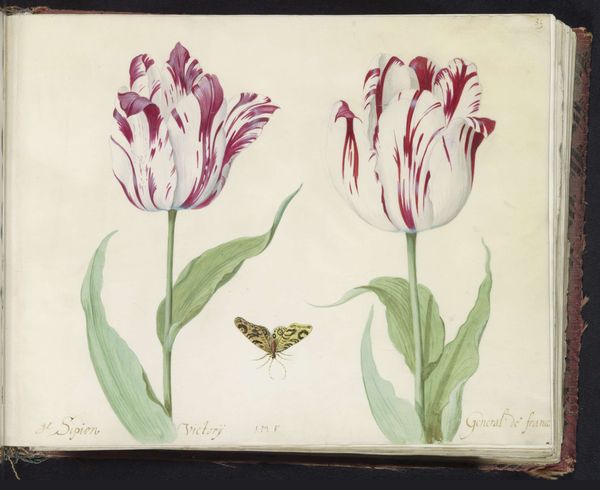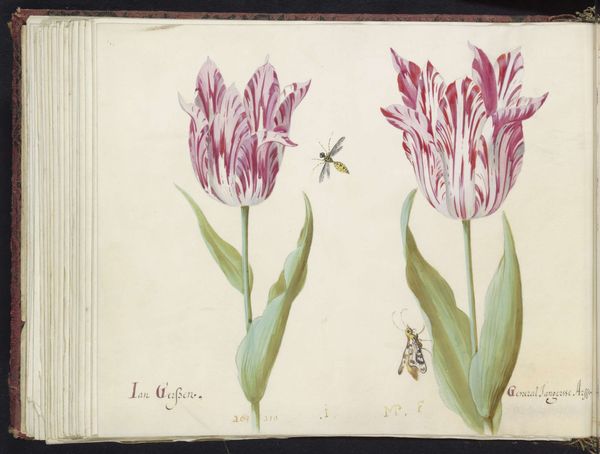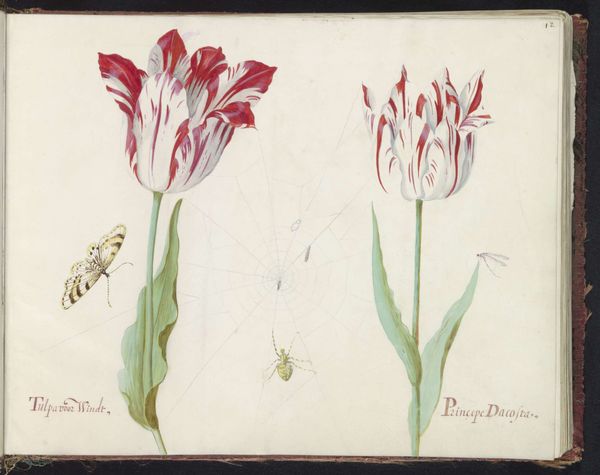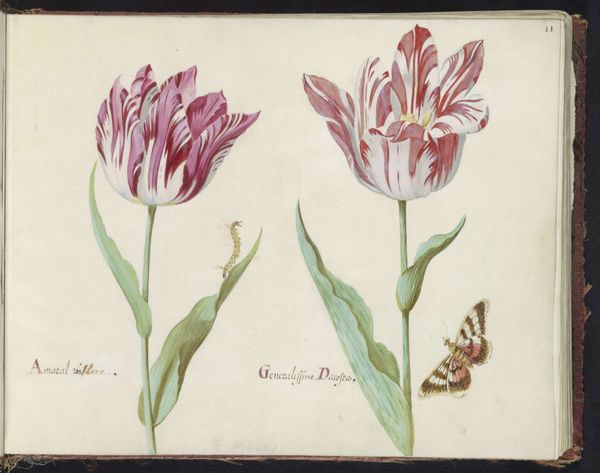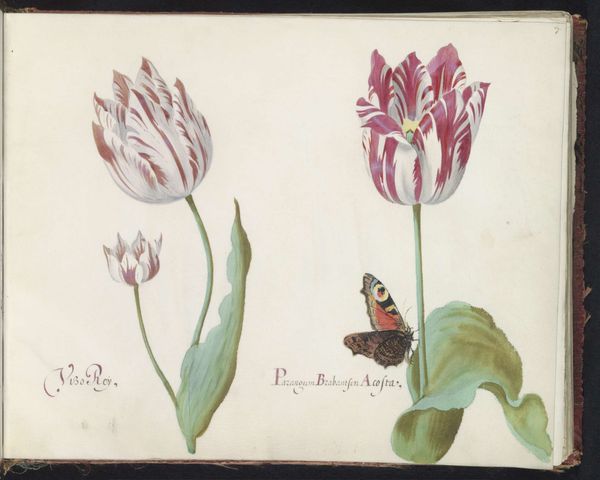
painting, watercolor
#
water colours
#
dutch-golden-age
#
painting
#
figuration
#
watercolor
#
watercolour illustration
#
botanical art
#
watercolor
#
realism
Dimensions: height 265 mm, width 335 mm
Copyright: Rijks Museum: Open Domain
Editor: Here we have Jacob Marrel's "Two Tulips with Wasp, Butterfly and Snail," created in 1637 using watercolor. It's deceptively simple at first glance, almost like a page from a child's nature book, yet the realism of the insects feels strikingly modern. What do you see in this piece? Curator: The inherent structure is captivating. Note how Marrel organizes the composition around the verticality of the stems, playing with the dynamic tension between the organic forms of the flora and fauna and the implied geometry of the page. Observe how the coloration shifts our perception, juxtaposing whites and greens that suggest vulnerability with saturated reds that manifest visual tension. Editor: It's interesting you mention tension; to me, it feels very tranquil. Do the individual elements of the drawing – the wasp, butterfly, snail – contribute something formal to the piece? Curator: Precisely. Consider the semiotic load of each element. The wasp and butterfly introduce lightness and the fleeting quality of beauty, whereas the snail, clinging to the leaf, implies permanence, yet also decay. Editor: The textures too, are striking. How did he achieve this level of detail using watercolors? Curator: Through careful layering and the manipulation of transparency. Notice how the artist coaxes depth and luminosity from the page with incredibly thin, overlapping washes and subtle contrasts in tone, bringing us back to the interplay between realism and representation that lies at the heart of Dutch Golden Age art. Editor: So it's the meticulous application of materials that grants the picture its vivacity? Curator: In a sense, yes. It is Marrel’s engagement with his media, in confluence with other artistic tools, which offers a visual encoding that’s especially potent. Editor: Thank you! Looking closely, the piece definitely gives much more than meets the eye. Curator: Indeed, it is in understanding the material structure of the work that its complex and contradictory message starts to resonate.
Comments
No comments
Be the first to comment and join the conversation on the ultimate creative platform.
